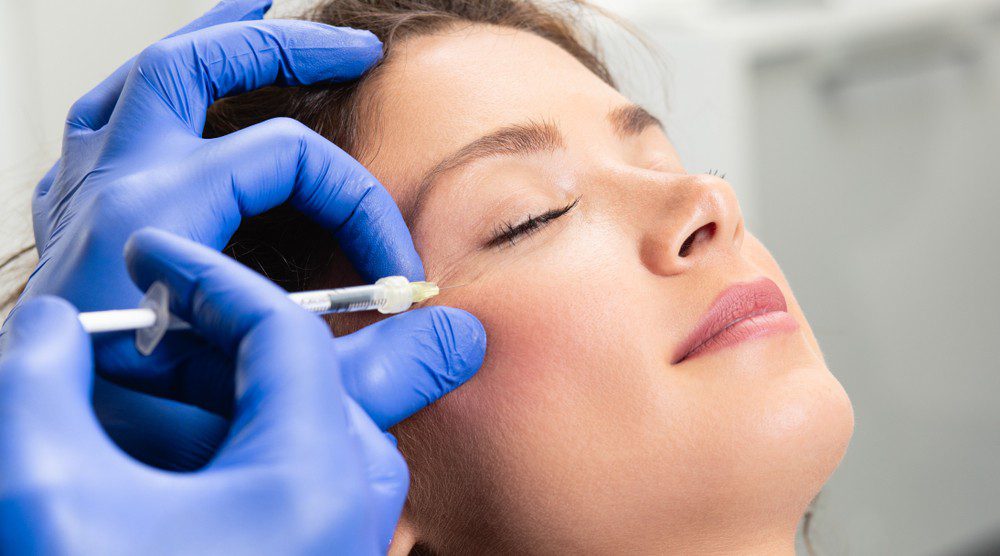Everything you need to know about age spot treatment

What are Age Spots?
Age spots, also called liver spots or solar lentigines, are flat, pigmented patches that commonly appear on sun-exposed areas like the face, hands, shoulders, and arms. These spots range in color from brown to gray to black and can vary in size. While age spots are common in adults over 50, younger people can get them too, especially if they spend a lot of time in the sun. Age spots are common and usually harmless, but they can be a cosmetic concern for many. With a variety of treatment options available, from over-the-counter products to professional medical treatments, it’s possible to reduce or eliminate age spots effectively. Always consult with a healthcare professional to choose the best treatment for your skin type and needs.
What are the treatments for Age Spots?
SKIN111 offers a variety of treatments to lighten and remove age spots. These treatments can either be in the form of topical preparation or with the use of medical devices. These includes the following:
Topical Treatments
- Skin-Lightening Creams: These creams contain ingredients like hydroquinone, glycolic acid, or kojic acid that help to lighten the spots over time.
- Retinoids: Prescription creams containing retinoids (like tretinoin) promote skin turnover and can gradually fade age spots.
- Exfoliants: Products containing alpha-hydroxy acids (AHAs), or beta-hydroxy acids (BHAs) help exfoliate the skin and lighten spots.
Medical Procedures
- Laser Therapy (Smart PICO LASER): Uses concentrated light energy to target and destroy melanin-producing cells, effectively reducing the appearance of age spots.
- Broadband Light Laser Treatment (BBL) or Intense Pulsed Light (IPL) Therapy: A non-invasive treatment that uses broad-spectrum light to target melanin and break down pigmentation.
- Cryotherapy: Involves applying liquid nitrogen to the age spots, freezing, and destroying the pigment.
- Chemical Peels Treatment: A chemical solution is applied to the skin, causing it to exfoliate and eventually peel off, revealing new, less pigmented skin underneath.
- Microdermabrasion: Uses a device to gently sand the skin, removing the outer layer and promoting new skin growth.
Causes of Age Spots
Age spots are caused by overactive pigment cells. Ultraviolet (UV) light speeds up the production of melanin, the natural pigment in the skin. On skin that has had years of sun exposure, age spots appear when melanin becomes clumped or is produced in high concentrations.
Diagnosing Age Spots
Diagnosing age spots involves a thorough physical examination by a healthcare professional. The process includes visual inspection through dermatoscope or magnifier, patient history, and sometimes additional tests to rule out probability of other conditions.
Who needs Age Spot Treatment?
Age spot treatment is not a medical emergency for most people since age spots (solar lentigines) are generally harmless and do not pose a health risk. However, individuals might seek treatment for age spots for cosmetic reasons.
Procedure of Age Spot Treatments
The procedure for treating age spots varies depending on the chosen method. Here is an overview of the common treatments and their procedures:
Topical Treatments
- Skin-Lightening Creams
Medical Procedures
- Laser Therapy (PICO Laser)
Consultation: Initial consultation with a doctor to determine suitability.
Preparation: Avoid sun exposure and discontinue certain medications if advised by the doctor.
Procedure: A laser device emits light that targets and destroys melanin-producing cells.
Sessions: Multiple sessions (typically 1-3) may be required depending on the severity and number of age spots.
Aftercare: Use sunscreen and avoid sun exposure.
- BBL or IPL Therapy
Consultation: Initial consultation to assess the skin and determine suitability.
Preparation: Similar to laser therapy, including avoiding sun exposure.
Procedure: A handheld device delivers broad-spectrum light to target melanin and reduce pigmentation.
Sessions: Several sessions (typically 3-5) may be necessary for optimal results.
Aftercare: Sun protection and skincare routine as advised by the doctor.
- Cryotherapy
Consultation: Evaluate skin type and age spots.
Procedure: Liquid nitrogen is applied to the age spots, freezing and destroying the pigment.
Duration: The treatment is quick, usually a few seconds per spot.
Healing: The treated area may blister and peel. Healing typically occurs within a few weeks.
Aftercare: Keep the area clean and protected. Avoid picking at the peeling skin.
- Chemical Peels
Benefits of Age Spot Treatment
Age spot treatment offers several benefits, primarily related to cosmetic appearance, psychological well-being, and skin health.
Prevention of Age Spots
Sun Protection: Regular use of sunscreen with a high SPF can prevent age spots.
Protective Clothing: Wearing hats, long sleeves, and sunglasses can help protect your skin from UV exposure.
Avoid Peak Sun Hours: To shield your skin from age spots and other sun damage, try to steer clear of direct sunlight during the hours when UV rays are most intense, usually from 10 a.m. to 4 p.m.
Post-Treatment Care
Post-treatment care is crucial for maintaining the results of age spot treatments and ensuring the health of your skin. Proper care can also help prevent new age spots from forming. Here are some essential steps and tips for post-treatment care:
Sun Protection, Moisturization, Gentle Skincare Routine, Healthy Lifestyle
Conclusion
Age spot treatment offers a range of benefits, from enhancing appearance and boosting confidence to improving overall skin health and preventing future spots. Consulting with a dermatologist such as those at SKIN111 clinics can help individuals choose the most suitable treatment and achieve the best possible results.
Most Popular:
-

Sciton HALO vs Sciton BBL
Read More »September 20, 2022 -

What is profhilo, and how is it different from fillers?
Read More »September 20, 2022 -

Body contour solutions from SKIN111
Read More »September 20, 2022 -

Does IV GLUTATHIONE therapy work
Read More »September 20, 2022 -

How can an IV drip help you boost your energy
Read More »September 20, 2022